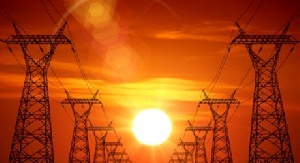Businesses in the Ashanti and Brong Ahafo Regions have called on the Load Management Committee to increase the supply of power to industries in the two regions, as the power rationing regime continues to affect their output.
The Vice Chairman of the Association of Ghana Industries’s Ashanti and B/A branch, Mr. William Awuku Ahiadormey, in an interview with the B&FT said: “While some industries in Tema, Accra and Takoradi are expected to benefit from the 30 percent increase in power supply to the country’s industrial hub, as directed by the Power Ministry, the Ashanti and Brong Ahafo Regions have been left to their fate”.
He said the irony is that industries dotted along residential areas have had to depend largely on the use of generator sets to carry out their operations, considering that any time the area suffers power-cuts it also affect them.
The power-cuts in the two regions have greatly increased the cost of operation for businesses who have had to rely on diesel-powered generators for production.
“I spend close to GH?7,000 weekly to purchase diesel to run my operations. This has affected our output and revenue flow. Instead of ECG making efforts to address the current challenge, it is rather wooing industries in the region to accept a possible tariff increase,’ he said.
Mr. Erasmus K. Baidoo, Ashanti Regional Public Relations Officer of the ECG, told the B&FT that Tema and some parts of Accra have special power-delivery arrangements for industries, for which reason the industrial hub is given that attention. “But unlike these places, Kaase in Kumasi, designated to be an industrial enclave, has been encroached. This makes it difficult for industries in the region to be part of such arrangements.
“We want everybody to be in business; we want as many Ghanaians as possible to be in business because electricity is available. Not only that, we are expecting people to reciprocate this by paying for the power they consume,” he said.
Poor rainfall and challenges with gas supply from both Nigeria and Ghana’s own gas deposits off Cape Three Points, plunged the country into a load-rationing regime. Government then resorted to emergency power from Turkey and Dubai to address the shortfall in generation.
For a whole year, from August 2012 to August 2013, Ghana, Togo and Benin received no gas from Nigeria because the pipeline was damaged by a vessel in Togolese waters.
Even before then, supply was hardly up to fifty percent of what was expected; and when supply resumed after the pipeline was fixed, the story remained the same for a long time.
Until recently, volumes supplied to Ghana dropped to an all-time low of between 30million and 50million standard cubic feet per day, making it difficult for the solely gas-reliant Sunon Asogli power plant (200 megawatts) to stay on.
However, the country’s gas supplies from fields off shore Cape Three Points have increased, while gas supply via the West African Gas Pipeline has also been at its peak volume.
“Currently, we are getting in excess of 140million standard cubic feet per day of gas from Nigeria. That has been quite encouraging,” Kofi Ellis, Business Development Manager of the VRA has said.
Business News of Thursday, 8 October 2015
Source: B&FT

















